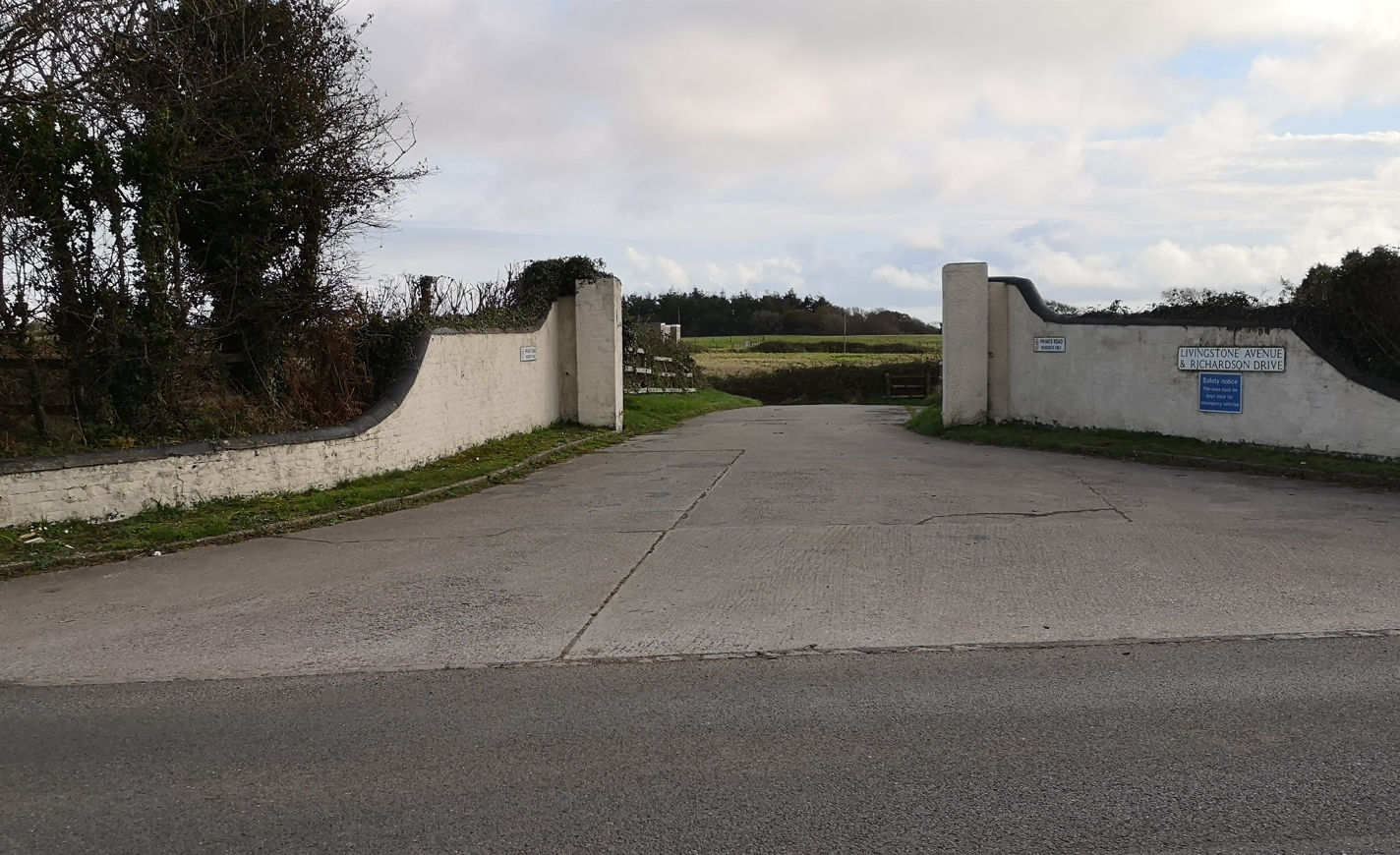Land West of Collaton Park, Newton Ferrers

The future of the former RAF station was first raised in the House of Commons by the then Totnes MP Anthony Steen in December 1983, who asked the Secretary of State for the Environment what steps were being taken to fill the vacant houses at Collaton Cross, how many houses there were, and for how long they had remained empty.
Sir George Young replied: ‘No steps are being taken to fill the vacant houses at Collaton Cross, Newton Ferrers in South Devon. They have been passed to PSA for disposal. There are eight former officers' married quarters which have been vacant for approximately three years and 32 former airmen's married quarters, empty for the last 12 months.’
A year earlier a planning application had been submitted to determine the permitted use of the site. The application was refused and it went to appeal. The appeal was dismissed and it was clear that the site was not seen as an appropriate location for further development by either the Local Planning Authority nor the Planning Inspectorate.
By 1983, the site had been completely cleared of the buildings. Then subsequently, in 2014, outline application 37/2548/14/O (with some matters reserved) for a mixed use development of 70 dwellings, allotments, community facility, recreation and employment land was submitted. Officer recommendation was for refusal:
The proposed development represents a major application in the South Devon AONB. The NPPF states that planning permission should be refused for major development in such designated areas other than in exceptional circumstances and where it can be demonstrated it is in the public interest. Whilst it is noted that the proposal would provide affordable housing to meet need in Newton and Noss Parish, the circumstances are not considered to be exceptional since the nature of that need, notably the quantum of housing, has not been demonstrated; and it follows, therefore, that a proper assessment of alternative deliverable sites that could meet this need with a less harmful impact on the AONB is not possible. As a consequence the selection and development of this site is not considered to be in the public interest.
However seven members of the Development Management Committee disagreed, with four abstentions, and the application was approved in March 2020. Significantly development failed to start within the proscribed three years, so as we argued in our first objection, that application had lapsed. This was therefore a new application, and we gave a number of reasons why it should be refused.
Two months later we submitted a second objection in response to additional information the applicant had submitted in December, arguing public benefit. It was our firm belief that had this major countryside development proposal been put before the Planning Inspectorate for the preparation of the JLP (so that a public consultation could take place), it would have been deleted from the plan.
Our third objection followed in April in response to the applicant having submitted another landscape document in support of the proposal, in which we noted that the AONB‘s Unit’s experts and the District Councils Landscape Specialist had both written to object to the proposal. Then in May we found it necessary to submit a fourth letter of representation, this time in response to the applicants producing another briefing note with which we disagreed.
However all this was to no avail. The case officer recommended conditional approval, subject to prior completion of a S106 agreement, and the Development Management Committee concurred. So we wrote to the Secretary of State (our fifth objection) stating our concerns. Again without success.
The Decision Notice was finally issued on 14 September 2023 with development required to commence within two years.
